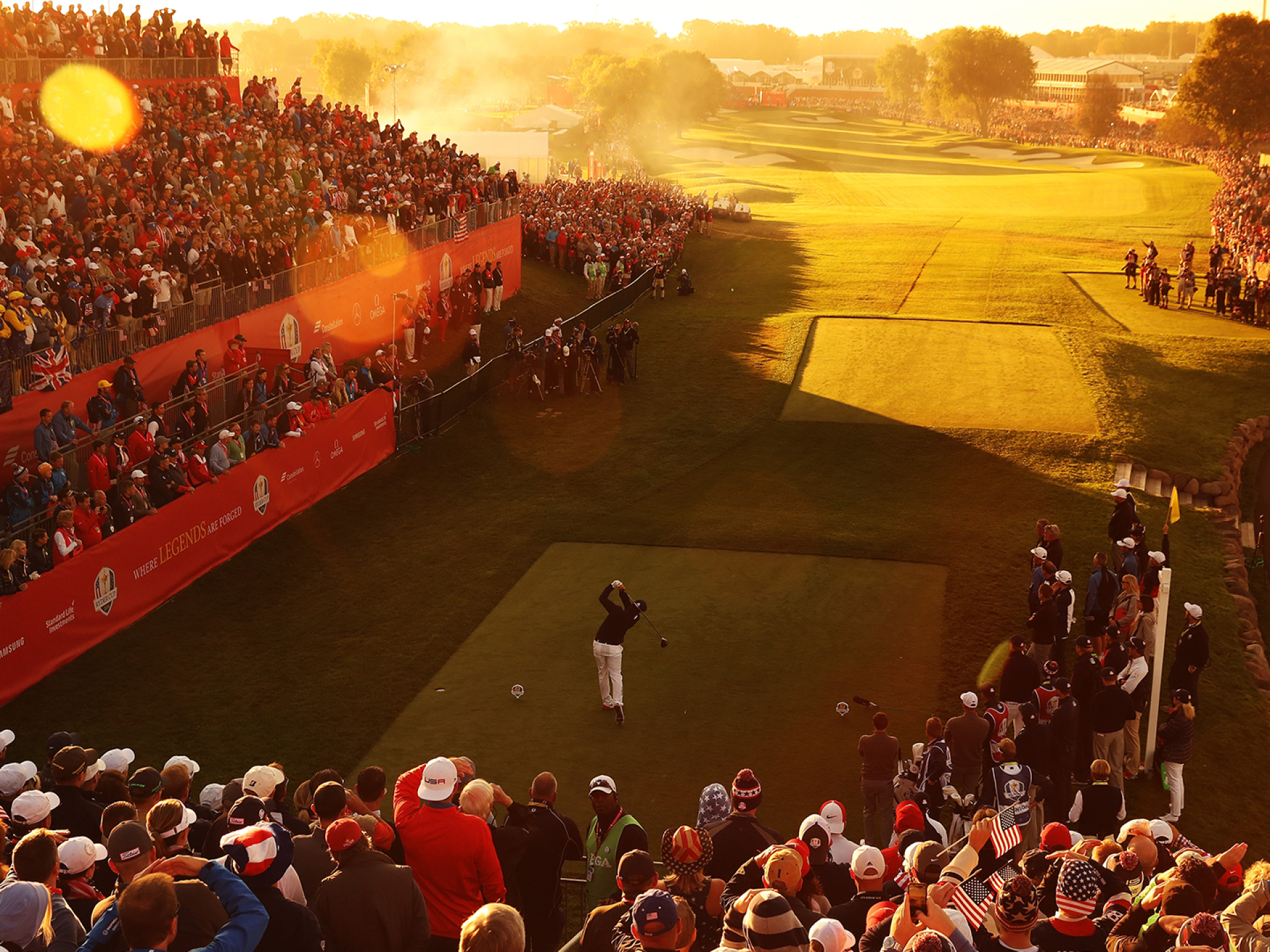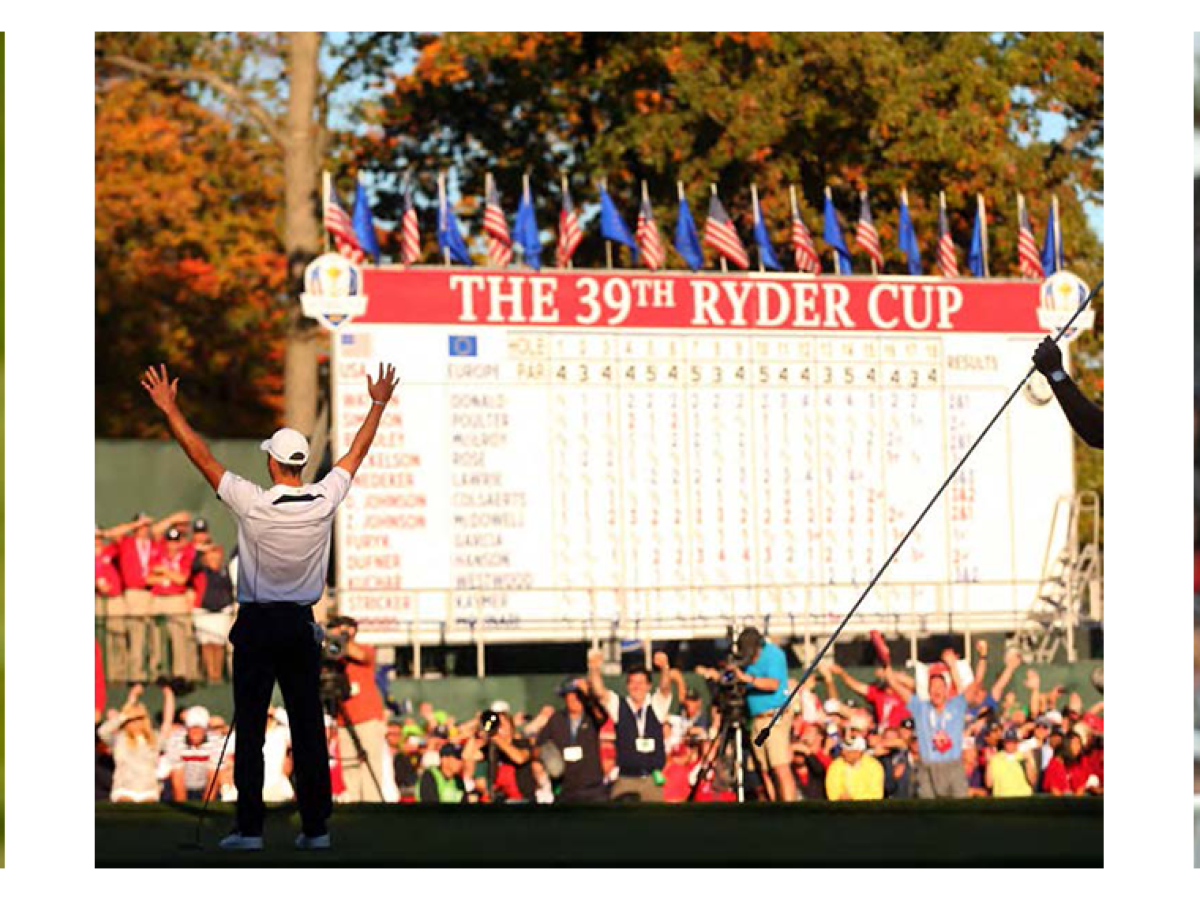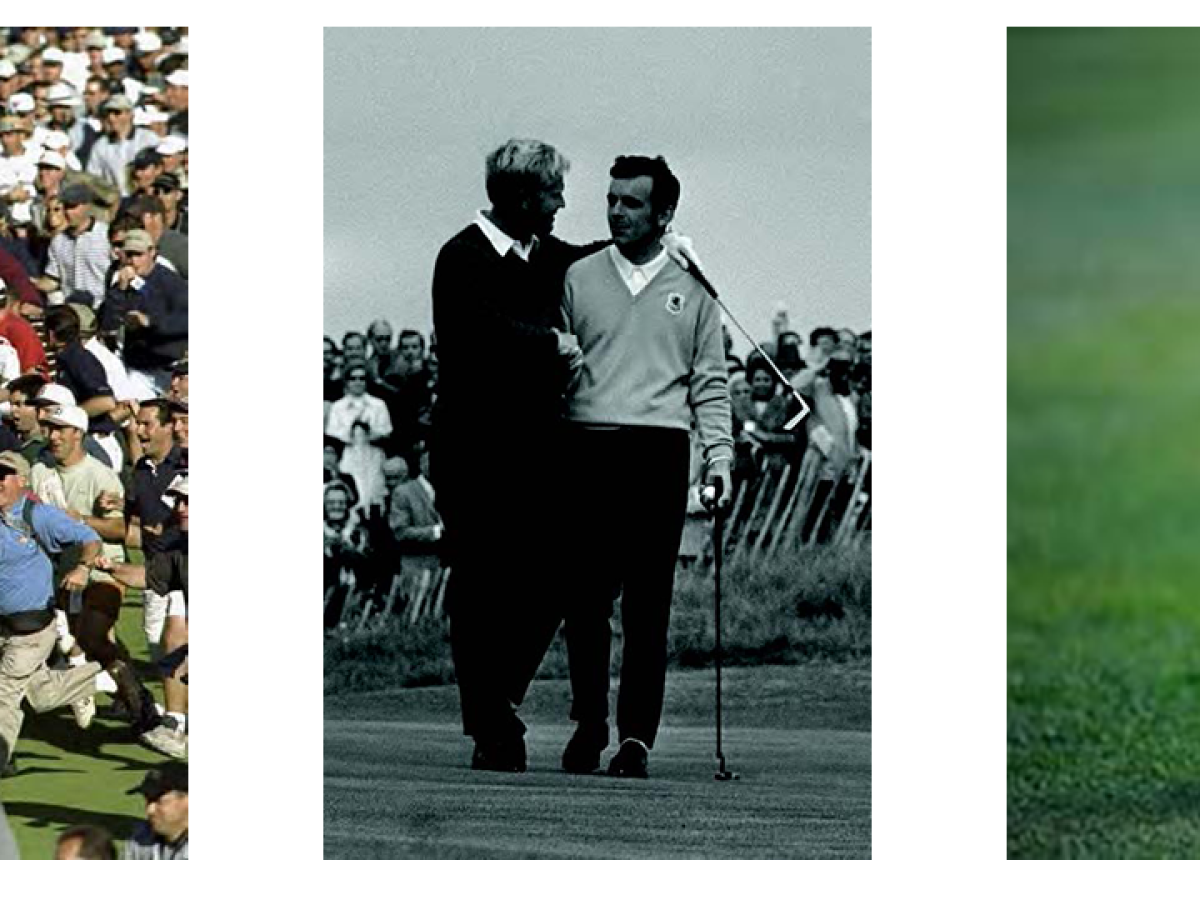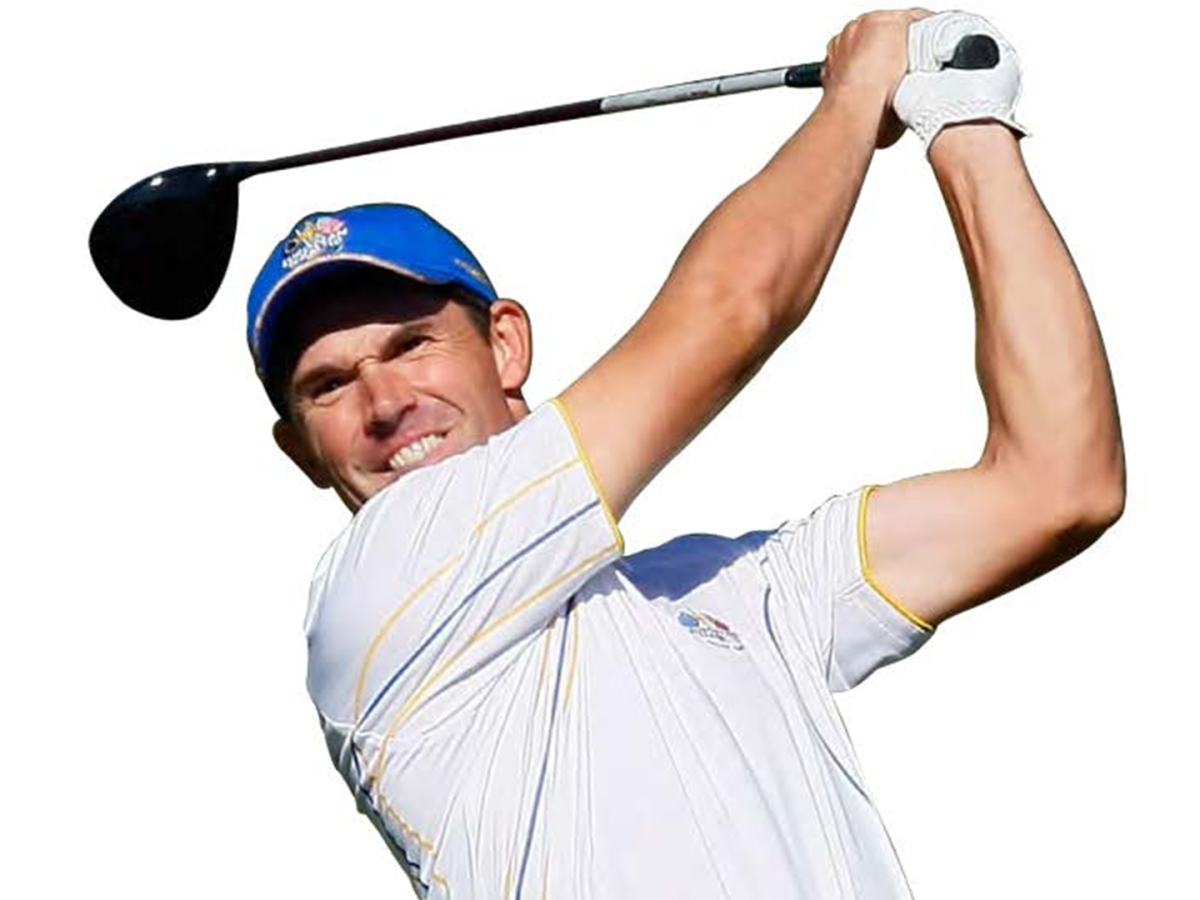September 25, 2018
Ryding High

This article was originally published in Populous Magazine, our biannual publication featuring news, information, and trends from the worlds of sport, entertainment, and major public events. Find out more, and sign up to receive a free copy, here.
What is it about the Ryder Cup – golf ’s biennial clash between Europe and the USA – that is so utterly irresistible to sports fans?
Ahead of September’s competition, in France, BBC golf correspondent Iain Carter picks out the 10 reasons for the enormous cultural impact of this contest, now over 90 years old.
1. It unites Europe in a way no other sport can
The rancour of Brexit and other continental squabbles will be set aside when European nations stand together this September. In golf this has been the case since 1979 when Jack Nicklaus suggested his fellow Americans should compete against Europe in its entirety rather than just against Great Britain and Ireland.
In what other sport would a Briton or a Spaniard or a Swede or a Dane implore a German to succeed?
That’s what happened at Kiawah Island in 1991 when Bernhard Langer failed by only a fraction of an inch to win the match. It occurred again in 2012 when Martin Kaymer completed the “miracle of Medinah” (right), bringing Europe back from the dead to retain the trophy.
2. USA is the natural home of golf but Europe has dominated so far this century
Europe has won six out of the eight Ryder Cups staged since the start of the 21st Century, thereby blurring memories of decades of previous US domination. But with half of the world’s courses located in America, the country remains golf’s ultimate super-power. It is the nation of Nicklaus, Tiger Woods, Arnold Palmer and Phil Mickelson – and the stars and stripes still dominate the world rankings.
America was once pretty blasé about the Ryder Cup but since 1985 ambivalence has been replaced by a different feeling. This is a country that hates to lose, to the extent that after their 2014 defeat, the PGA of America (USA’s association of golf pros) created an 11-member Ryder Cup Task Force with the mission of turning fortunes around.
3. An individual sport in a team environment produces sporting magic
The Ryder Cup turns arch individuals, such as Sir Nick Faldo or Colin Montgomerie, into ultimate team players. Neither of these Britons is particularly sociable on the tour.
However, in the Ryder Cup, Faldo was Europe’s record points scorer (25) and Monty never lost a singles match in eight appearances. Both cherish these extraordinary statistics and reserved their finest golf for the tensest of occasions as they performed with teammates watching.
Camaraderie can equally inhibit the greatest of players. Tiger Woods (right), for example, brought out the worst in his playing partners, and has an incongruously modest Ryder Cup record.
4. Golf may be a chivalrous game but the Ryder Cup removes all mercy
Ever since the American team turned up to the second match in 1929 with new-fangled steel shafts in their clubs, the Ryder Cup has courted controversy. Even the event’s most sportsmanlike moment was affected: when Nicklaus conceded a short putt on the last to Britain’s Tony Jacklin to ensure the 1969 match at the Royal Birkdale Golf Club ended in a tie (right), America’s captain Sam Snead was not impressed. “All the boys thought it was ridiculous,” he said. “We went over there to win, not to be good ol’ boys.”
That same tie witnessed some very unsportsmanlike conduct when the Great Britain (Ireland had yet to be included) captain Eric Brown instructed his team not to help opponents search for balls in the rough.
Twenty years later two of the Cup’s most passionate characters, Paul Azinger and Severiano Ballesteros, nearly came to blows during a tense singles contest. They argued over the state of Seve’s scuffed ball and a penalty drop taken by his American opponent. There was always a rancorous undercurrent when these two played each other.
Passions again ran high in 1991 when the US team wore camouflage caps in support of their troops in the Gulf War, seemingly oblivious that European soldiers were also involved. That Kiawah Island match was dubbed the “war on the shore”. And in 1999 premature US celebrations after Justin Leonard holed a monster putt on the final day (below) marred an astonishing and winning American fight-back. It was called the “Battle of Brookline” because of the hostility shown by the passionate Boston fans.
5. Unlike any normal golf tournament, the Ryder Cup stirs up tribal passions
In ordinary golf events the galleries cheer their favourite players and appreciate the excellence of all competitors. This goes out of the window at the Ryder Cup. Chants of “U-S-A, U-S-A” accompany matches in the States, while European fans borrow from soccer culture to compose wittily supportive songs. “You’ll bring the cup home, my boy, because you are a McIlroy,” they sing about the great Rory McIlroy to the tune of Que Sera, Sera.
6. The captains wage a great tactical battle, ensuring much sporting intrigue
Which player is best suited to play with whom? How often should a golfer play over the three days? How does a skipper treat those left out of each session? And, crucially, in what order does he send out his players?
This is what creates the match-ups as America’s list is put against Europe’s. Do the skippers try to second-guess each other in order to engineer an advantageous mismatch? Often captains will consult managers and coaches from other sports, as Europe’s Paul McGinley famously did with former Manchester United FC boss Sir Alex Ferguson. Tactical nous along with selection and motivational skills make a big difference to the outcome.
7. The ceremonies are unremittingly kitsch
Opening ceremonies are cheesy affairs marked by prolonged and pompous speeches. Often embarrassingly clad in unfashionable and formal attire, players arrive with WAGs also uniformly dressed and presented as mere appendages, which feels terribly out of step with today’s more enlightened times. Flags are raised, and anthems are played, but the only moment of any substance comes at the end with the announcement of the pairings for the first matches.
8. Venues must be big
Ryder Cups are rarely played on the world’s best golf courses. More importantly, the venues are large enough to accommodate the required infrastructure. Formerly known as tented villages, nowadays they are more akin to canvas conurbations, housing refreshment areas for around 50,000 spectators a day. Then there are broadcast and media facilities for thousands of journalists from all over the world.
The courses, meanwhile, are set up to favour the home team. In the 2016 match, Europe felt the Hazeltine course was too easy because the rough had been largely mown away. This suited America’s big hitters, enabling them to cruise to victory.
This year it is down to Europe to tailor their home venue – Le Golf National course, just southwest of Paris – to their liking. Europe are unbeaten at home for more than two decades. They will fight as hard as ever to win back the trophy.
9. For once, money doesn’t matter
Golf is all about the money. Success is measured in how much cash a professional wins. Indeed the standings used to determine who qualifies to play in the Ryder Cup are largely earnings related.
However, although the proceeds of the matches bankroll the European Tour and PGA of America, the players and their caddies receive no payment for playing in them. They do it for the glory; they wear no sponsor logos and are clad in team uniforms. This absence of financial reward separates the Ryder Cup from mainstream golf and adds significantly to the attraction of the matches.
10. Striking one’s first Ryder Cup shot is the most terrifying drive in the entire sport
“I couldn’t even see the golf ball. I was just so nervous,” admitted three-times major champion Padraig Harrington (above) when he teed off. In 2006 the all-conquering Woods carved his opening tee shot into water at Ireland’s K Club. Sweden’s Robert Karlsson tried to use the incident to settle himself. “It was a great way to calm down,” he said. “Everything felt fine until I teed it up. Then I stood over the ball and thought, ‘Oh no’.
It was different to any other pressure I’ve ever felt.” And 1996 Open Champion, Tom Lehman, summed up the experience thus: “I was way more nervous on the opening day of the Ryder Cup. Every Ryder Cup match is like being in the last group on Sunday in a major.”
The venue for this year’s Ryder Cup, Le Golf National, in France, will also host the 2024 Olympic Games golf competition.
Lorem ipsum dolor sit amet consectetur, adipisicing elit. Non facere corporis et expedita sit nam amet aut necessitatibus at dolore enim quis impedit eius libero, harum tempore laboriosam dolor cumque.
Lorem, ipsum dolor sit amet consectetur adipisicing elit. Illo temporibus vero veritatis eveniet, placeat dolorem sunt at provident tenetur omnis, dicta exercitationem. Expedita quod aspernatur molestias eum? Totam, incidunt quos.


